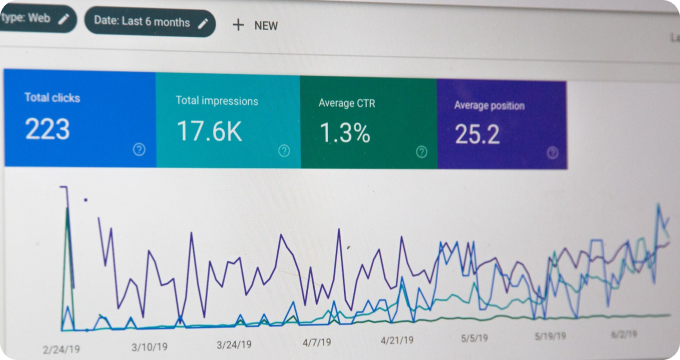The Future of Multi Carrier Shipping Software: Predictions and Emerging Trends
- November 24, 2023
- 2 minutes
The field of logistics and supply chain management has seen significant transformation in the past few years, spurred on by advancements in technology and shifting trade dynamics. At the center of this evolution is the use of multi-carrier shipping software—an innovative tool that allows businesses to coordinate and manage their shipping operations across multiple carriers. This powerful software not only brings efficiency and cost-effectiveness, but it also unlocks new possibilities for businesses navigating an increasingly complex global trade landscape.
Multi-Carrier Shipping Software Defined
Multi-carrier shipping software, in its most fundamental sense, functions as a technological intermediary between shippers and a variety of carriers. With the capability to integrate with existing enterprise resource planning (ERP) or warehouse management systems (WMS), this software enables businesses to streamline their shipping process and optimize their logistical operations.
Why is it relevant? The answer is rooted in the inherent challenges of managing shipments across multiple carriers. Given the global nature of trade, businesses often need to engage with several carriers—each with their own unique operational parameters, rates, and tracking systems. This creates a complex web of interactions that can be highly cumbersome and inefficient to manage manually.
Understanding the Trade-offs
Like any decision in business, the choice to implement multi-carrier shipping software involves an evaluation of trade-offs. On one hand, businesses can leverage this technology to reduce their operational costs, become more competitive, and potentially expand into new markets. On the other hand, investing in such software requires financial resources, a potential shift in operational structures, and ongoing maintenance and updates to the software.
For many businesses, the balance of these considerations is heavily tilted in favor of adoption. The potential cost savings and process efficiencies outweigh the initial investment and potential complexities of integrating the software into existing operations.
Emerging Trends and Future Predictions
The future of multi-carrier shipping software is shaped by several emerging trends, each with the potential to significantly influence how businesses manage their shipping operations.
- Increased Automation: Automation is a pervasive trend across all industries, and shipping is no exception. As machine learning and artificial intelligence continue to evolve, we can anticipate a greater degree of automated decision-making within multi-carrier shipping software. This could include predictive analytics that guides carrier selection, automated tracking, and real-time updates on shipping statuses.
- Greater Integration Capabilities: As businesses continue to implement and rely on a range of technological solutions, the importance of integration becomes paramount. Future iterations of multi-carrier shipping software will likely offer more robust integration capabilities, allowing businesses to seamlessly connect their shipping operations with other aspects of their business.
- Enhanced Customization: No two businesses are alike and as such, the need for customizable software solutions is important. In the future, multi-carrier shipping software is likely to offer increased customization options, allowing businesses to tailor the software to their specific operational needs and strategic objectives.
- Sustainability Considerations: With the global push towards sustainability, businesses are increasingly considering the environmental impact of their operations. Future versions of multi-carrier shipping software may incorporate sustainability metrics, enabling businesses to select carriers based on their carbon footprint or other sustainability measures.
In the grand scheme of things, these changes are more than just conjectures—they are the inevitable culmination of technological advancements and shifts in global trade dynamics. As these changes unfold, businesses that strategically leverage multi-carrier shipping software will be better positioned to navigate the complexities of global shipping, drive efficiencies, and ultimately, achieve their strategic objectives.
In the final analysis, the future of multi-carrier shipping software is dynamic, exciting, and inevitably linked with the broader trends reshaping the world of logistics and supply chain management. It is a future that is unfolding even as we speak, and one that promises a myriad of opportunities for those willing to embrace change and innovation.
Learn More
Unleash the power of efficiency and cost-effectiveness in your business by diving deeper into our enlightening blog posts about multi carrier shipping software. For a comprehensive and unbiased view, they are encouraged to explore our meticulously curated rankings of the Best Multi Carrier Shipping Software.
Popular Posts
-
 4 Compelling Reasons Why Your Business Needs Multi Carrier Shipping Software
4 Compelling Reasons Why Your Business Needs Multi Carrier Shipping Software
-
 Debunking X Myths About Multi Carrier Shipping Software
Debunking X Myths About Multi Carrier Shipping Software
-
 5 Things I Wish I'd Known About Multi Carrier Shipping Software Before Implementing One
5 Things I Wish I'd Known About Multi Carrier Shipping Software Before Implementing One
-
 How to Hire the Right Multi Carrier Shipping Software Provider
How to Hire the Right Multi Carrier Shipping Software Provider
-
 Ask These Questions to a Multi Carrier Shipping Software Provider to Choose the Right One for Your Business
Ask These Questions to a Multi Carrier Shipping Software Provider to Choose the Right One for Your Business






